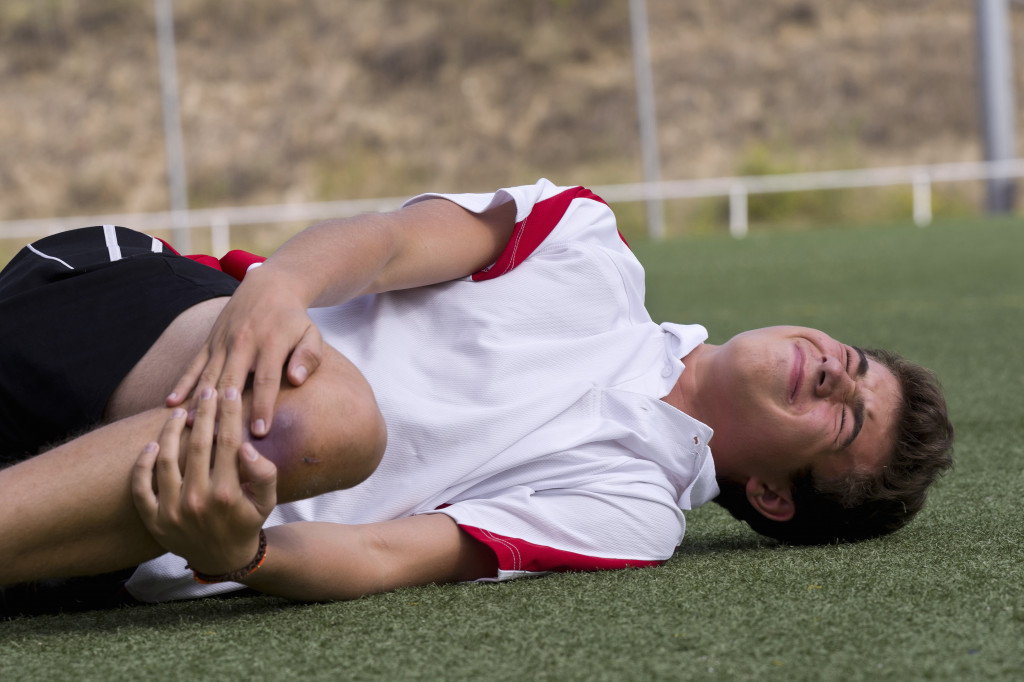- Seek medical attention immediately to diagnose the injury and provide a rehabilitation plan.
- Allow adequate rest for the body to heal from strain or trauma, and utilize ice therapy to alleviate pain.
- Apply proper compression bandages and taping for improved joint management, pain relief, and accelerated healing.
- Participate in exercise therapy for restored strength and mobility, as well as prevention of future injuries.
Sports injuries can be devastating for athletes, as they can cause pain and prevent them from participating in their sport. Recovering from a sports injury quickly is essential to returning to the field or court, but it isn’t always easy.
Fortunately, there are some steps you can take to speed up your recovery time and get back into action sooner rather than later. This article will discuss how to recover from sports injuries faster by utilizing the right treatments and techniques.
Medical care
Here are some tips about medical care to help you heal quickly from a sports injury:
Seek medical attention

Seeking medical attention to recover from a sports injury is of the utmost importance, no matter how minor the injury might seem. Professional care will increase the chances of a complete and fast recovery and help prevent long-term damage or disability.
Receiving sports injury treatment should include a diagnosis to identify what type of injury has occurred and a rehabilitation plan determining the appropriate course of action that should be followed. Treatment plans often involve physical therapy, rest, medications, or medical procedures, depending on the severity of the initial trauma.
Whether an acute injury such as an ACL tear or an overuse injury such as tendinitis, seeking medical advice should help accelerate healing so that athletes can return safely to their competitive activities faster with a lower risk for potential future aggravation or recurrence.
Rest
Rest is a critical part of recovery from a sports injury, as it allows the body the time to heal and recover from the strain of exercise or trauma. Taking adequate rest is essential because attempting to push through an injury can lead to further damage and delay recovery. Allowing rest periods also helps reduce pain and swelling, aiding in symptom relief.
As such, athletes should ensure that they provide sufficient rest for any injuries so that their long-term health and performance levels aren’t compromised. Talking to your doctor or sports medicine specialist about the best regimen for recovering quickly and safely after a sports-related injury is essential.
Ice therapy

Ice therapy is a crucial component of recovering faster from sports injuries. Proteins called myofilaments, which constitute most muscle fiber can be significantly damaged due to sports trauma. Ice therapy helps reduce swelling by constricting blood vessels and decreasing circulation to the injured area.
This helps to prevent further injury by limiting the amount of tissue damage. It also reduces pain by numbing the area and reducing inflammation. Regular ice therapy can thus help to speed up recovery time, allowing an athlete to return to their sport sooner. Along with proper rest and physical therapy, incorporating Ice therapy into an individual’s recovery regimen is essential for ensuring quicker healing and a safe return to activity.
Compression bandages/taping
Properly applied compression bandages and taping are essential to the recovery process for sports injuries. While applying direct pressure can reduce swelling and improve joint management, the correct use helps produce optimal results that allow athletes to return to their sport quickly and safely.
The importance of adequately applied compression bandages cannot be overstated, as they provide extra stability to an injured area and help decrease pain and inflammation, promoting accelerated healing with less chance of re-injury. Return to sports participation will be much swifter with this critical step in fitness recovery.
Exercise Therapy
Exercise therapy is an essential component of recovery from a sports injury. Once the initial pain and swelling have subsided, exercise therapy can help restore strength and mobility to the injured area, allowing it to heal faster than if left alone. Working with a physical therapist can ensure that you are performing exercises in the correct form, which will reduce reinjury, pain, or improper healing.
The combination of improved strength and mobility helps maintain range-of-motion of the joint, reduces stiffness in the area, and helps to realign the muscles around it so that all movement is balanced. Exercise therapy also plays a role in preventing future injuries; strengthening weak muscle groups leads to improved stability and balance, which can not only prevent overuse injuries but also ward off some traumas.
Nutrition
Proper nutrition is essential for athletes recovering from a sports injury. Eating a balanced diet will replenish the body’s energy stores and provide the vitamins, minerals, amino acids, and other nutrients required to repair damaged tissue. A diet rich in lean proteins, whole-grain carbohydrates, and healthy fats will fuel recovery by helping to build muscle mass and promote healthy bones, skin, and blood vessels.
Additionally, consuming plenty of fluids like water can help flush out toxins that may prevent healing. Adequate nutrition is vital in speeding up an athlete’s recovery so they can return to their peak performance sooner rather than later.
These are the tips for recovering from sports injuries faster. Implementing the right treatments and techniques can help athletes return to competitive activities quickly and safely with minimal risk for future aggravation or recurrence.

